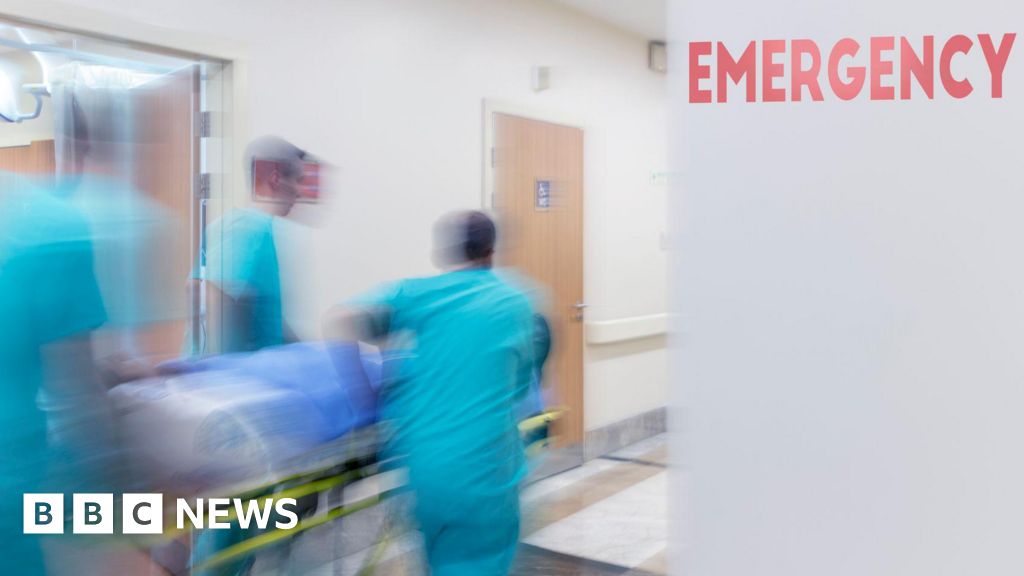On May 19th, Nebraska was granted the first waiver allowing a state to prohibit purchases of soda and energy drinks through the Supplemental Nutrition Assistance Program (SNAP) or food stamps. A few days later, waivers were approved for Indiana and Iowa to be able to exclude soda and candy, and soon after, waivers were granted for Arkansas, Idaho, and Utah. Waiver requests from several other states are waiting for approval.
Through the years, the idea of not using SNAP to subsidize soda and candy has had bipartisan support. And the recent efforts to use SNAP to incentivize healthier eating are the latest sign of a rapid culture shift to get at the root causes of the epidemic of chronic diseases, which in large part is fueled by what we eat and drink.
We’re now approaching a tipping point that puts actual systemic changes in reach — changes that would improve the lives of millions of people. Momentum is picking up, and it’s time to recognize that healthy eating, the desire for good health — for ourselves and for our children — is not a partisan issue.
A study by Tufts University found that diet-related diseases cost the U.S. $1.1 trillion each year, and that 85% of all healthcare is connected to managing diet-related chronic diseases.It’s also equal to the entire economic output of the food system—in other words, for every $1 we spend on food, we lose $1 in health costs. The toll in human terms from our diet is even worse, estimated to cause 500,000 deaths per year.
Let’s look at how we got here. SNAP is administered by the states but managed by the U.S. Department of Agriculture. States wanting to make changes in SNAP benefits need to seek a waiver from the federal government. The program serves over 42 million people nationwide each month, so changes in the program can have a huge health impact.
When the program was enacted in 1964, there was a proposal in the House to prohibit sugary beverages, or SSBs. But some senators opposed it because it was thought that SNAP recipients were not likely to spend much of their benefits on things like soda. They were wrong. According to a 2016 study from the USDA, approximately 20% of SNAP’s yearly $113 billion in spending — $23 billion — is used to buy unhealthy beverages and foods. This means taxpayers are paying twice — once to subsidize the purchase of the products and a second time to pay for treatment of their hugely costly health consequences. And a 2022 study found that children on SNAP consumed more sugary beverages and processed meats than children who were income eligible for the program but not participating.
The government is not a neutral player — it can put its thumb on the scale toward sickness or toward health. A 2018 study in the journal PLOS Medicine found that offering a 30% financial incentive for fruit and vegetable purchases could prevent over 300,000 cardiovascular events and save over $6 billion in healthcare costs. Coupling that with a restriction on sugary beverage purchases prevents an estimated 797,000 cardiovascular events and saves $39 billion in healthcare costs.
“SNAP has looked essentially the same for over 60 years, despite scientific consensus that sugary drinks are harming our health,” wrote Christina Roberto and Alyssa Moran from the University of Pennsylvania School of Medicine. “By subsidizing sugary drinks with SNAP, we are rewarding an industry that limits choices for lower-income families, ensuring the lowest-quality food is the most available and affordable option.”
Read More: What Is SNAP and What Challenges Is It Facing Under the Trump Administration?
In 2004, Minnesota, under Republican Governor Tim Pawlenty, became the first state to request a waiver to prohibit the purchase of candy and soda with SNAP benefits. The request was rejected, with USDA Regional Administrator Ollice Holden responding that it would “stigmatize food stamp recipients” and cause “confusion and embarrassment” at checkout. “Implementation of this waiver would perpetuate the myth that participants do not make wise food purchasing decisions,” wrote Holden.
In the following two decades, this idea — that not subsidizing unhealthy foods would “stigmatize” SNAP recipients — was used by many opponents of the waivers. But the epidemic of diabetes and obesity is a systemic problem exacerbated by the unhealthy choices people are being guided into and indeedswimming in. It’s not a coincidence that diabetes and obesity rates soared as ultraprocessed foods and sugary beverages saturated the market. There is nothing “stigmatizing” about taxpayers not paying for food and beverages that make you sick.
In 2010, New York Governor David Paterson, a Democrat, and New York City Mayor Michael Bloomberg, an independent at the time, requested permission to restrict soda from SNAP not for a permanent waiver but just for a two-year pilot program. A day later, Bloomberg got letters from the CEOs of Pepsi and Coca-Cola opposing the plan. As Murray Carpenter, author of Sweet and Deadly: How Coca-Cola Spreads Disinformation and Makes Us Sick, notes, in 2011 alone, the “taxpayer-funded windfall” for Coca-Cola, Pepsi and other beverage makers was $3.7 billion.” Now that number is up to $10 billion a year.
At the time, New York City officials estimated that each year $75 to $135 million in SNAP benefits was being spent on sugary beverages in the city. As Mayor Bloomberg noted, “This initiative will give New York families more money to spend on foods and drinks that provide real nourishment.”
The appeal landed during the Obama administration that had pledged to “to solve the problem of childhood obesity within a generation.” That same year, First Lady Michelle Obama launched Let’s Move!, her healthy eating and exercise initiative, which urged people to “drink less soda or sugar-sweetened drinks.” It was attacked by Republicans, including Rep. Michele Bachmann, as being an example of “the nanny state.” Though, in a rare show of bipartisanship, Obama was actually defended by former Arkansas Governor Mike Huckabee, who said “I do not think that she’s out there advocating that the government take over our dinner plates.” Huckabee’s daughter, Sarah Huckabee Sanders, is now one of the governors leading the charge to change SNAP benefits.
The Big Soda lobby kicked into high gear to block New York’s request and was joined by its strange bedfellows alliance of anti-hunger groups and their advocates in Washington. Eighteen members of the Congressional Black Caucus came out against the proposal. The New York Times explained that Coca-Cola and Pepsi were among the largest donors to the nonpartisan Congressional Black Caucus Foundation. As Marion Nestle, the renowned nutrition and public health advocate, put it, “Soda companies have worked hard to create an environment in which drinking sugary beverages all day is normal… Soft drink companies have had a free ride for decades. I hope the USDA will approve New York’s proposed ban.”
New York’s request was rejected. As New York City Commissioner of Health Thomas Farley put it at the time, this decision “really calls into question how serious the U.S.D.A. is about addressing the nation’s most serious nutritional problem.”
Secretary of Agriculture Tom Vilsack countered that “incentive-based solutions… are better-suited for the working families, elderly and other low-income individuals” than restrictions are. He then added: “We are confident that we can solve the problem of obesity and promote good nutrition and health for all Americans and stand ready to work with New York City to achieve these goals.” Turns out, his confidence was deeply misplaced. During the Obama administration, obesity rates went from 33.7% to 39.6%.
Vilsack was right about one thing — that incentives do work. From 2014 to 2018, the USDA sponsored the Food Insecurity Nutrition Incentive Program, which funded projects that incentivized the purchase of fruits and vegetables through SNAP. One such pilot in Massachusetts was found to have increased fruit and vegetable purchases by 11% and consumption by one-quarter cup per day. So, yes, incentives work, but given the scale of the crisis, why not use every tool at our disposal — including ending the ability for states to use taxpayer dollars toward soda and candy?
In December 2024, Colorado’s Democratic Governor Jared Polis, who asked for a waiver in this latest round of requests, posted on X : “Giving states the opportunity to focus on having healthier foods in SNAP should be our priority. Prioritizing healthy, fresh foods over junk food and soda will reduce the risk of having future health issues such as diabetes and cavities…Removing candy and soda and prioritizing fresh food will in turn lead to more healthy and fresh food on the shelves of stores in underserved areas.”
In Kansas, Democratic Governor Laura Kelly asked for a waiver in April, with the request noting that Kansas has seen a rise in obesity, Type 2 diabetes and heart disease, which are “linked to the consumption of soft drinks and candy.” Two days later, Kelly vetoed the Kansas legislature bill asking for a waiver, suddenly claiming “it would make it more difficult for Kansans to access the food they need to feed their families,” and would “harm Kansas businesses.” She considered that “Kansans should eat healthier” but argued that “changes to the SNAP food assistance program should be made at the federal level, not on a patchwork, state-by-state basis.” And yet it was the health of her own state’s constituents that she had wanted to protect just a few days before.
As Mark Joslyn, professor of political science at the University of Kansas, wrote, “In a rational world, Kelly backs the bill. Kansas’s troubling health outcomes should not be ignored.” But “tribal politics” prevailed, Joslyn concluded, and “Kelly — fair or not — comes across as a champion for Coca-Cola and Mars bars.”
In April, Arizona’s Democratic Governor Katie Hobbs vetoed a bill requesting a waiver, saying that it would “unnecessarily deprive” SNAP recipients of their purchasing power and “relegates them to a new underclass of grocery shoppers.”
Currently, the Healthy Snap Act of 2025, which would make the prohibition on purchasing soda and unhealthy ultraprocessed foods national, is pending in the Houseand Senate.
But the fact of the matter is: it’s possible to both argue against cuts in benefits and changes to those benefits that help people improve their health. If anything, ending the massive subsidies to soda and ultraprocessed food companies could increase public support for SNAP.
We know that SNAP restrictions work, and we know that incentives to buy healthier foods also work. We now have momentum for fundamental change that could improve the health of millions of people. We need to do everything we can to keep the momentum going.

 5 hours ago
3
5 hours ago
3








